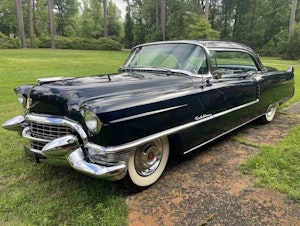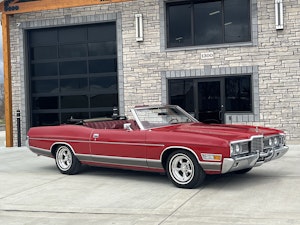Media | Articles
Hurricane Helene Fires: Salt Water and Lithium-Ion Batteries Still Don’t Mix
By Monday morning, Hurricane Helene and the damage it caused last Thursday was still the top story in Tampa news, with an unsettling focus on electric cars, and the damage they caused after being shorted out by rising salt water. It’s a topic we’ve covered before, but it’s worth an update.
The resulting fires occurred despite a near-constant warning from the media to move electric cars out of harm’s way. Said Tampa Mayor Jane Castor: “Water and ion batteries do not mix. They literally explode.” Florida Governor Ron DeSantis joined in: “If you have an EV, you need to get that to higher land,” he said during a news briefing on Wednesday, well before the storm. “Be careful about it getting inundated. It can cause fires.”
Indeed they did. An early count suggests perhaps a half-dozen homes were damaged or destroyed by burning electric vehicles along the Florida Gulf Coast. And this time, there’s video.
Understandably, many homes hit by Helene were very close to the seashore, and consequently some were in high-end areas. A popular image on the area newscasts was a mansion-sized home in Davis Islands, one of two in the upscale area that was gutted by fire, leaving little more than the front wall. In the garage was the unrecognizable rubble of an electric car, reportedly a Tesla.
Even more troubling, it appears that it doesn’t take much salt water to cause a fire. A 50-second Nest surveillance video that went viral was taken in a Siesta Key home, showing a Tesla in a garage with barely a few inches of salt water leaking in. A battery fire ignites from underneath, and quickly turns into a fireball. The family was home and had to evacuate after midnight as the hurricane raged. “If they blow that easily,” said Lisa Hodges, the owner of the toasted Tesla, “it’s just unfathomable.”
One of the loudest voices regarding electric vehicles and fires has long belonged to Jimmy Patronis, Florida’s chief fire marshal, who continued to warn about the danger when lithium-ion batteries short. In 2022, Patronis detailed his own experience with a battery fire: “I joined North Collier [Florida] Fire Rescue to assess response activities related to Hurricane Ian and saw with my own eyes an EV continuously ignite, and continually reignite, as fire teams doused the vehicle with tens of thousands of gallons of water. Subsequently, I was informed by the fire department that the vehicle once again reignited when it was loaded onto the tow truck.”
Marketplace
Buy and sell classics with confidence
It will be some time before numbers are in for Helene, but exposure to salt water reportedly caused 21 electric vehicles to catch fire in 2022 with Hurricane Ian, and at least half a dozen due to Hurricane Idalia, which did not result in as much salt water on dry land in populated areas as Ian did. An early assessment said that of the first 16 reported electric car fires due to Ian, one was a Porsche, one was a Lucid, and 14 were Teslas.
According to data from the U.S. Department of Energy, Florida has the second-highest number of registered electric vehicles in the country, with more than 250,000. Some 42,000 of them are in the Tampa area.
As Hurricane Helene progressed northward, it began picking up fresh water instead of salt water, so resulting electric car fires in states like Georgia and North Carolina are expected to be less common.
Tesla is taking it on the chin in most news reports, which typically don’t mention that Teslas make up more than half of the electric vehicles sold. Tesla has released no statements about the battery fires caused by salt water and severe weather.

The company does have a “Safety Report” regarding fires on Tesla.com, though it doesn’t detail salt water intrusion as a cause: “Our global data indicates that, between 2012 and 2022, approximately one Tesla vehicle fire event occurred for every 130 million vehicle miles traveled. By comparison, data from the NFPA (National Fire Protection Association) and U.S. Department of Transportation indicate that one vehicle fire occurs in the United States for every 18 million miles traveled.
“Compared to average vehicles on the road, Tesla vehicles are comparatively even less likely to be involved in a fire event than these numbers suggest,” it says, “because Tesla’s data includes fire events that are caused by structure fires, wildfires, arson, and other causes unrelated to the vehicle, whereas the NFPA data excludes any fires where a structure is involved.”
A call to Tesla for comment was not returned.













Our very polarized and far from unbiased media of the day tends to make me think twice about news stories no matter what network they come from
EVs catch fire when exposed to salt water… yes. So somewhere between a 5-digit and 6-digit number of cars were destroyed by the hurricane. Half a dozen or so were EVs that caught fire… and destroyed (in many cases) houses that were already damaged beyond repair by the hurricane
I am far from being a fan of the EV, but I don’t think a media overfocus on battery fires is going to make them go away
Might not make them go away, but it’s enough to keep them out of MY garage!
RIGHT!
No, they are not going away, but neither are fossil fueled vehicles, not for a while, at least.
It’s one thing to have damage / lose the house and/or car but to have the car add to the damages by combusting itself isn’t helpful. I still say batteries are the weak link on EV’s. I guess you can say this car is literally toast. Why not have a combustion power generator for the vehicle. It can be done but no mainstream manufacturer seems to want to do that. I feel for those who lost their homes, etc. and have to start over after the Hurricane.
If these people couldn’t get these EV’s to higher ground, why the heck didn’t they at lease move them out into the driveway so their house didn’t burn.
hindsight being 20/20 is why. I doubt anyone was expecting the storm surge they got. The hurricane didn’t even come ashore in that part of the state, it came ashore up here in North Fla, which is 200-300 mile away from Tampa and Naples. I’ll bet they’ll know better next time
Seems to me, as an electrical and mechanical guy, that if the battery shorts out hard enough to burst into flames, a fusable link should be built into the battery, so if it does short out that bad, the fusable link would blow before the battery would catch fire. Or maybe a thermal fusable link like in a ceiling fire sprinkler, that would melt when exposed to fire and break the circuit. I think the batteries are fully sealed and waterproof but if not, the venting system could be protected. The load on the battery when it catches fire must be way above the maximum load encountered while in normal use so it should be possible to build in a safety fuse. Seems like…..
Really? You are posting comments too quickly. Slow down.
Seems to me, as an electrical and mechanical guy, that if the battery shorts out hard enough to burst into flames, a fusable link should be built into the battery, so if it does short out that bad, the fusable link would blow before the battery would catch fire. Or maybe a thermal fusable link like in a ceiling fire sprinkler, that would melt when exposed to fire and break the circuit. I think the batteries are fully sealed and waterproof but if not, the venting system could be protected. The load on the battery when it catches fire must be way above the maximum load encountered while in normal use so it should be possible to build in a safety fuse. Seems like..
Good idea, but it must not be that simple. Off-hand, I think that after the fusible link blows, the water will just serve as the conductor there, and you’ll still get a fire. Some bright person should pursue this idea further.
I’m a photographer. Both of my main Nikons use L-ION batteries. There are warnings in the user manuals that these things will burn or explode if they short out. Of course, I keep several spare batteries on hand. If my place floods (highly unlikely), my office will look something like that garage.
You simply have to decide what risks you are willing to run in this life.
In the 1970’s when the ford Pinto caught fire during a rear end collision because of a poor gas tank design, the governmet was all over this, why are they not doing the same with these EV car fires? Will it take a family being burned alive in there house while sleeping to wake up the regulators on this? I’m sure this can be fixed if scientists put there mind to it. Seems that the push to EV’s is causing a blind eye here.
It is known salt water and lithium batteries catch fire. There were warnings to move to a higher ground. There are an estimated 250,000 registered EVs. 42,000 in Fla. Its estimated 20 caught fire. The storm was underestimated.
Please. No more government agenda. They have ruined the diesel engines and are now targeting our gas appliances.
This! /|\ The government did wreck the diesel engine market! They decided that it was not clean enough inspite of the progress made to make it cleaner. Progress that cost the manufacturers multiple tens of millions of dollars to create and certify. The government just wiped it away. That decision is probably going to be the death blow to Jaguar Land Rover. They invested in clean diesel and were rewarded with nothing.
Just like the videotape recorder wars of the 70’s when VHS and Beta were duking it out for supremacy, why don’t consumers have the same choice? EV’s or ICE using gasoline or an ICE run on a fuel cell? Ammonia or Hydrogen? There has to be a better choice than the current two. Especially when tree hugging state govt’s are determined to phase out gasoline engines.
Let the buyer beware
Is this an issue (as big an issue) for PHEV and hybrid vehicles as well as BEVs? The term “electric vehicles” seems to be used somewhat loosely.
Who knew that salt water would be Kryptonite for Tesla?
The con list continues to grow with EV and the whole battery thing, I want off gas and wish I could afford an alternative and I still think hydrogen is a far better choice for so many reason
EV vehicles can spontanesly catch fire on their own. Nissan had 1 catch fire in the headquarters parking lot in the Nashville Tn area last year. Took 45000 gallons of water & foam to put it out, with fire personnel tied up for a day & a half. Ford’s had trucks catch fire in storage lots. I’ve even heard dealers saying you shouldn’t park your EV in the garage just because of the fire danger.
Politics aside
Oh wait…..